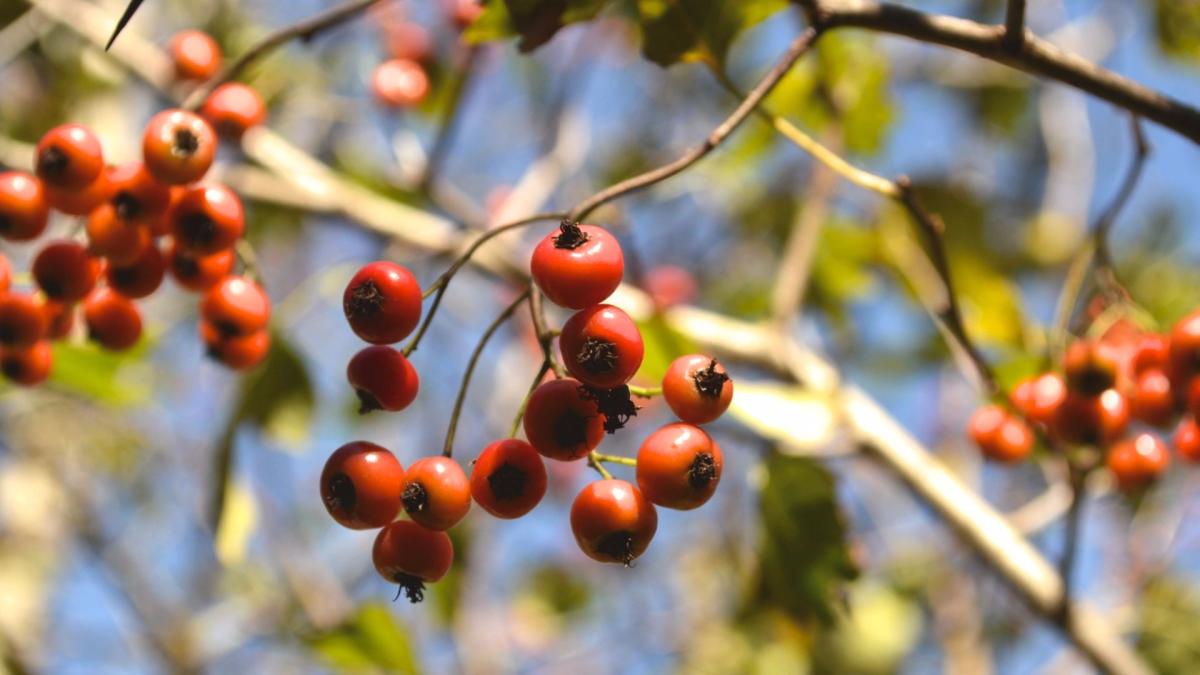Washington Hawthorn: A Symbol of Hope

Washington Hawthorn: A Symbol of Hope
Crataegus phaenopyrum
Native to the southeast U.S., the Washington hawthorn was first discovered by an unknown explorer and taken to England in the late 1600s. It was commercially grown in Georgetown and became popular around Washington D.C., its namesake. The Washington hawthorn was originally a shrub, but grew popular in its tree form. In natural settings, the Washington hawthorn grows in a wild and unkept pattern.
In 1899 there were 17 species of hawthorns known in the U.S. A decade later, that number grew to 1,100, and by 1979 the Forest Service’s Checklist of United States Trees reduced it down to 35 species and 46 hybrids. Part of the confusion comes from identification problems that startle even the most astute botanists.
The hawthorn group holds a place in history rich in emotion. To some in France, the hawthorn was a symbol of hope. Norman peasants wore sprigs in their hats as a reminder of Christ’s crown of thorns. Others viewed the tree as unlucky. So much so, that when it bloomed, a month of abstinence and devotion was the rule. Some brides, however, saw beauty in the blossoms and are said to have used them in bridal decorations dating back to Roman times. In Ireland, fairies were believed to find hawthorn hedges and screens suitable places for trysting. American legend Paul Bunyan also found practical uses for the thorny tree. He used its branches as a back scratcher.
Hawthorns generally have a heavy, close-grained wood that makes them excellent for firewood. Washington hawthorn is a survivor in urban conditions and one of the most versatile and valuable of the hawthorns for use in the landscape. It has been purposely planted outside building windows to reduce crime, as offenders are less likely to scale trees covered in thorns.
What’s in a Name?
The common name for the species comes from the City of Washington where it was grown in a nursery in the late eighteenth century. The “thorn”’ in its name is for its prominent thorns, and “haw” is an old English name for hedge. Crataegus was the ancient Latin name for hawthorns, derived from the Greek Krataigos, or thorn tree, which in turn came from the word Kratos, meaning strength and referring to the hard wood of these trees. The species name, phaenopyrum, means “having the appearance of a pear.” But did this refer to the shape of the crown, a stylized image of the leaf outline, or the similarity of flowers? It was probably the latter, but it’s anyone’s guess.
In the Landscape
The Washington hawthorn is a small, colorful tree that will brighten any landscape. Its pleasant display begins with reddish-purple leaves in spring, then turning dark green as they are joined by a graceful display of white flowers. In autumn, the leaves turn orange, scarlet or purple. Red berries extend the colorful show into winter, often contrasting beautifully with the first winter snow.
Beyond its beauty, it also performs an important function in nature. A number of the songbirds rely on the tree’s late-season berries as a winter food source. It reaches up to 30 feet at maturity and has slight drought resistance (hardiness zones 4-8). Take caution, the tree is also prone to fire blight, which can be severe in some parts of the country.
Catch up on The Kousa Dogwood.

